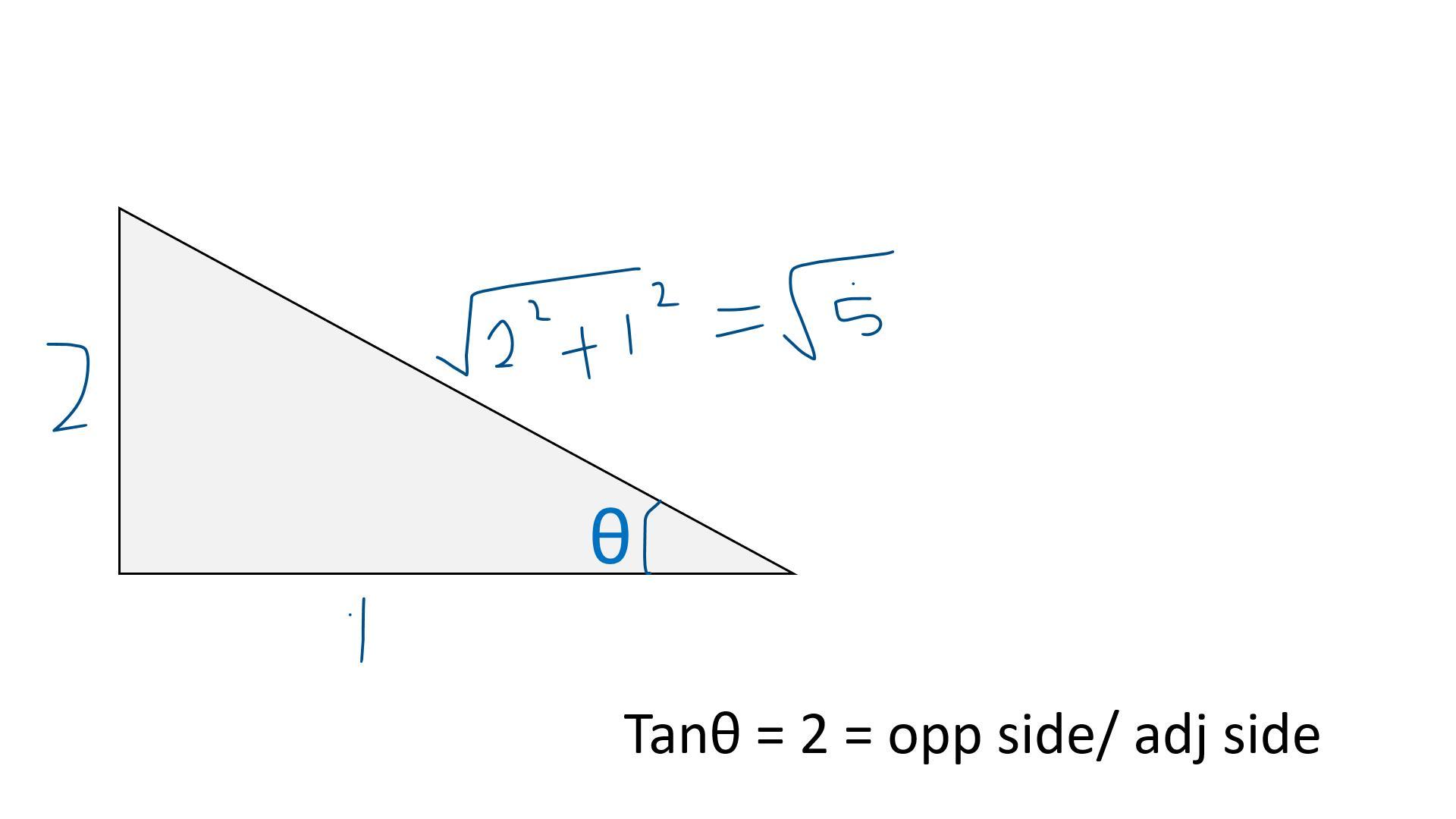The maximum height reached by a projectile is equal to half of the range of projectile. If the initial velocity of projection was 20 m/s, then what was maximum height reached? (g = 10 m/S2)
-
Subject:
Physics -
Author:
carmensawyer102 -
Created:
1 year ago
Answers 2
- We know a relation
- R tanθ = 4 H
Given: R = 2H ; u = 20m/s
- That implies, H/R = tanθ/4
⇒ H/2H = tanθ/4
- 1/2 = tanθ /4
We'll get tanθ= 2
Now we'll draw a triangle to calculate all trignometric frnctions easily
You can see the triangle in the Attachment.
From the triangle sinθ = [tex]\frac{2}{\sqrt[]{5} }[/tex] ; cosθ = [tex]\frac{1}{\sqrt[]{5} }[/tex]
H = [tex]\frac{u^2sin^2theta}{2g}[/tex]
H = [tex]\frac{400 * (\frac{2}{\sqrt{5} })^2 }{20} = \frac{4}{5} *20 = 16m[/tex]
H = 16m__________________________________________________Thank you, please mark as Brianlist!⇒Anagh :}

-
Author:
adriana8xry
-
Rate an answer:
2
Given:
Initial velocity [tex]=20m/s[/tex]
Acceleration due to gravity [tex]=10m/s^{2}[/tex]
To find:
Maximum height reached by the projectile.
Solution:
Step 1
For a projectile released from a point with some initial velocity as [tex]u[/tex] and the angle made by the projectile with the horizontal,
The height reached by the projectile [tex]H=\frac{u^{2} .sin^{2}\alpha }{2g}[/tex]
The range of the projectile is [tex]R=\frac{u^{2}.sin 2\alpha }{g}[/tex]
Step 2
Now,
According to the question,
The height reached by the projectile is equal to half the range of the projectile. Hence, we get
[tex]\frac{u^{2} .sin^{2}\alpha }{2g}=\frac{1}{2}\frac{u^{2}.sin 2\alpha }{g}[/tex]
[tex]sin^{2} \alpha =sin2\alpha[/tex]
[tex]sin^{2} \alpha =2.sin\alpha .cos\alpha[/tex]
[tex]sin\alpha =2.cos\alpha[/tex]
[tex]tan\alpha =2[/tex]
We know,
[tex]sec^{2} \alpha =1+tan^{2} \alpha[/tex]
[tex]sec^{2} \alpha =5[/tex]
Hence,
[tex]cos^{2} \alpha =\frac{1}{5}[/tex]
We know,
[tex]sin^{2} \alpha =1-cos^{2} \alpha[/tex]
[tex]sin^{2} \alpha =\frac{4}{5}[/tex]
Step 3
Now,
We have, [tex]u=20m/s[/tex] [tex];[/tex] [tex]sin^{2} \alpha =\frac{4}{5}[/tex] [tex];[/tex] [tex]g=10m/s^{2}[/tex]
We get, the height reached by the projectile as
[tex]H=\frac{u^{2} .sin^{2}\alpha }{2g}[/tex]
[tex]H=\frac{(20)^{2}(\frac{4}{5} ) }{2(10)}[/tex]
[tex]H=16m[/tex]
Final answer:
Hence, the maximum height reached by the projectile is 16 meter.
-
Author:
arelicrane
-
Rate an answer:
10
